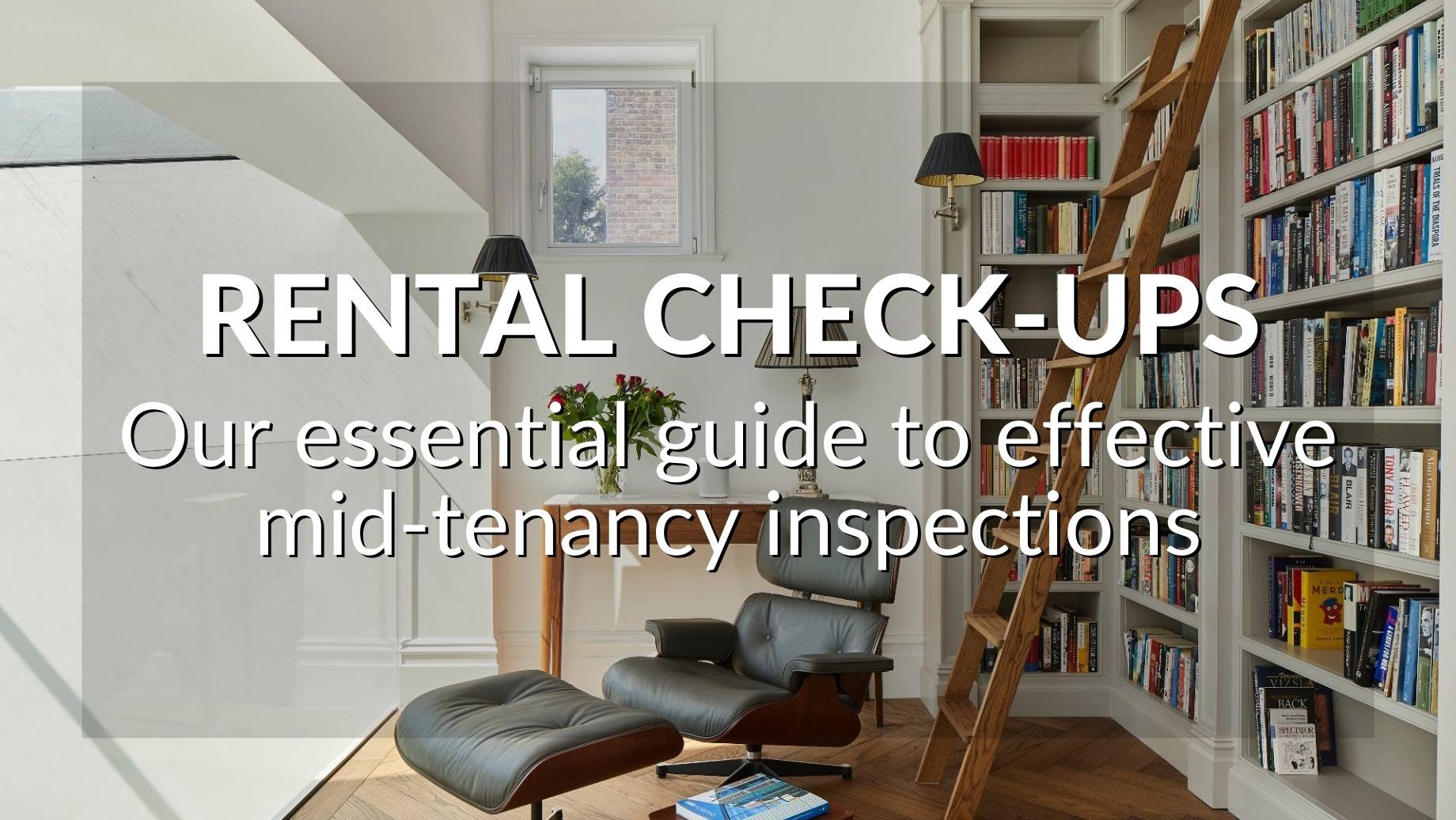
08 Nov RENTAL CHECK-UPS: OUR ESSENTIAL GUIDE TO EFFECTIVE MID-TENANCY INSPECTIONS
How often do you visit your buy-to-let?
When it comes to protecting the value of your property, mid-tenancy inspections help you stay on top of repairs, maintain a good relationship with your tenants and reduce changeovers, voids, and wear & tear.
Inspections are not about telling your tenants to make the bed, plump up the cushions or leave them feeling scrutinised. However, they are an essential element in the smooth running of every tenancy and to ensure your property is well looked after.
There’s plenty to cover when organising your visits, including when to arrange them, what to look out for and how to follow up, but with the tips in our essential guide, you’ll soon be an absolute pro.
ARE INSPECTIONS NECESSARY?
Mid-tenancy inspections are your chance to stay up-to-date on the general condition of your property and what it’s like to live in. Think of them as a way of supporting your tenants in having an enjoyable home life while caring for your buy-to-let as though they owned it themselves.
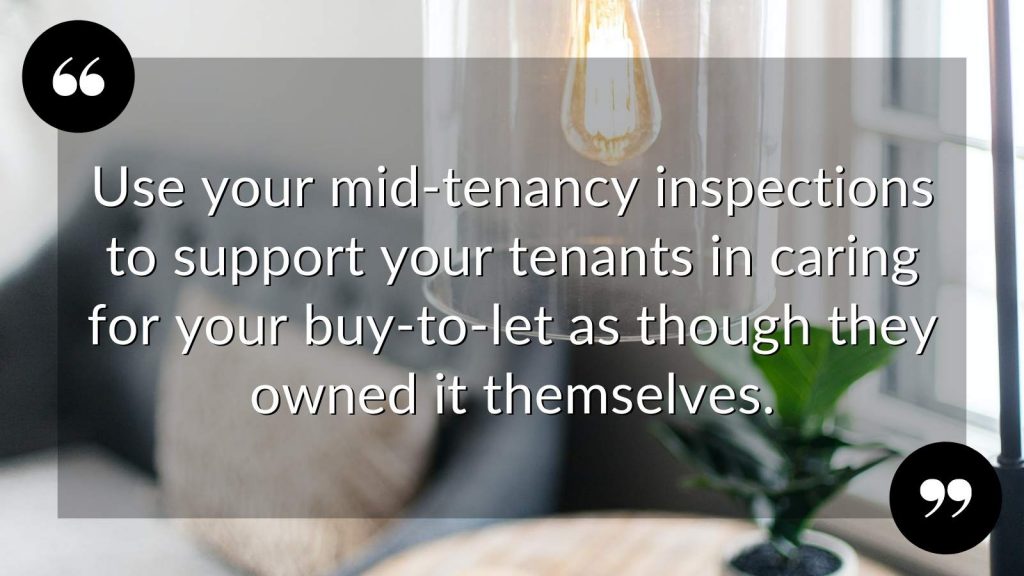
First things first, make sure your tenancy agreement includes a provision for routine inspections. We find a visit every six months strikes the perfect balance of keeping a handle on things without being intrusive.
Some landlords feel that having the rent paid on time means having good tenants, but it’s essential to know that your property is occupied in line with the tenancy agreement. That could be anything from the number of people living there to how they use it.
The level of interest shown by a landlord in looking after their property is often mirrored by their tenants, so regular inspections form a priceless part of every tenancy.
PREPARING FOR YOUR VISIT
Although the legal requirement is to give your tenants 24 hours notice, we’d suggest giving at least a week. It shows more consideration, creates the impression of an organised landlord and gives you and your tenants plenty of time to think about what to cover.

Inspections must also be carried out at reasonable times of the day, although we’ve never encountered a landlord trying to arrange a visit in the middle of the night! Ultimately it’s simply a matter of finding a time that works for you and your tenants.
You don’t need to send a letter: an email, text or WhatsApp message counts as written notice, and it’s wise to reconfirm 24-48 hours before the appointment.
Encourage your tenant to be there so you can talk together about your property. To avoid forgetting anything and to make the most of your visit, prepare a complete checklist of things to review. It’s also worth asking your tenants to write their own list of anything they’d like to discuss.
LANDLORD & TENANT CATCH-UP
Do you know your tenants’ plans?
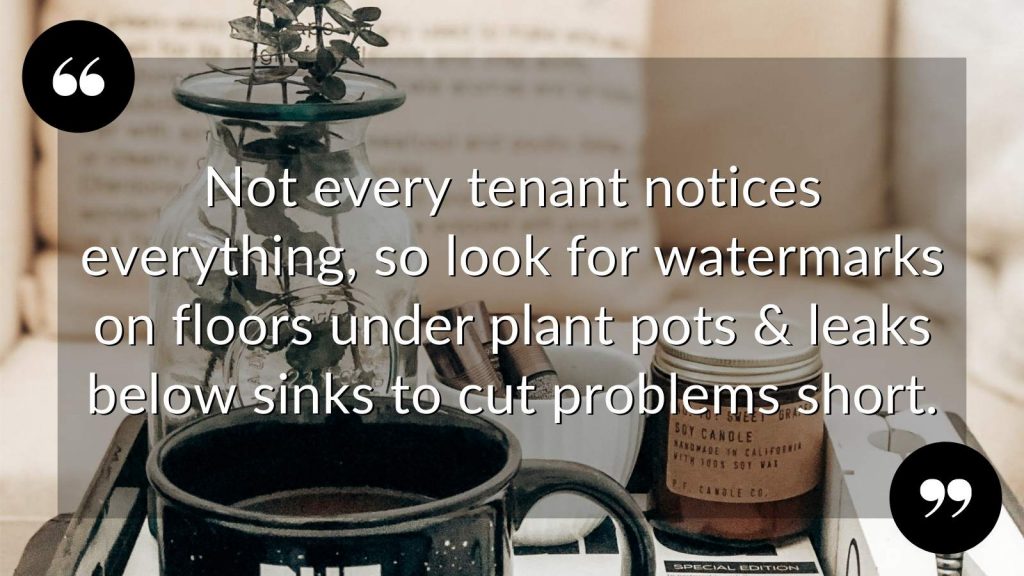
If they’re thinking about moving, you could start preparing now for any improvements you’d planned to make between tenancies. The more notice you have, the more time there’ll be for precision scheduling to minimise the number of vacant days.
Ask your tenants if they’re enjoying living in your property and whether anything has stopped working, started to come loose or needs a knack to operate.
Not everything is obvious to the naked eye, so check if any doors or windows are sticking, whether it’s warm enough inside during the winter and that every lock still functions so your tenants feel secure.
Nothing ever gets better by itself, but it’s easy for tiny issues and niggles to go unreported until they become larger problems. And when they build up, they become reasons for your tenants to look for a new home without you ever getting the chance to put things right.
YOUR PROPERTY CHECKLIST
Not every tenant – or every homeowner for that matter – notices everything all the time, so keep a level head when looking around. Remember that wear and tear is a fact of life, and you’ll always notice more after six months than seeing something every day.
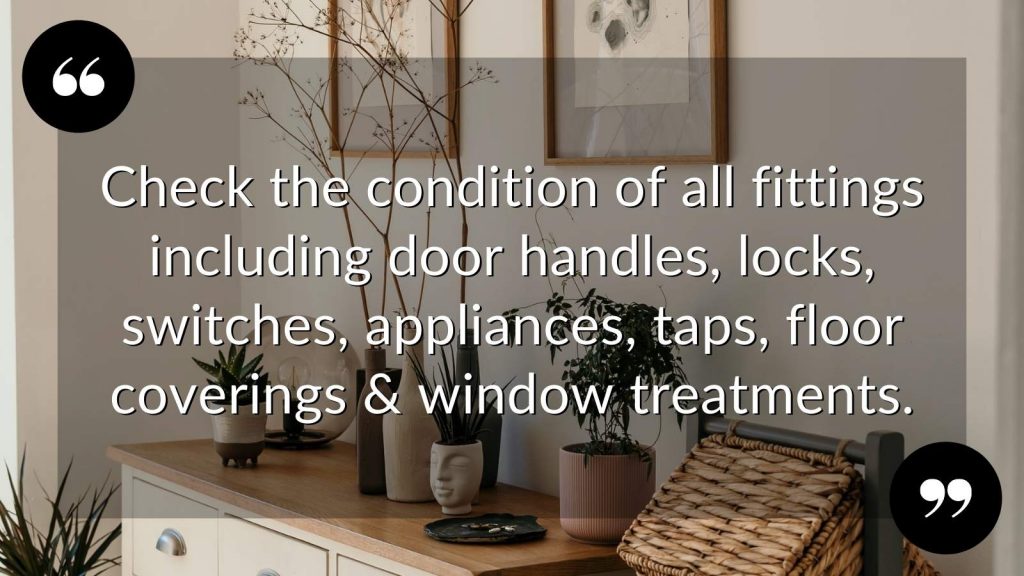
- Water issues are by far the most common, and damp or mould can appear for many reasons. From piled up products against tiles, blocked extractor fans and drying clothes on radiators to poor ventilation or external leaks – identify the cause, then find a solution.
- If your tenants like plants, check that saucers under pots are waterproof. Unglazed terracotta is porous, which can lead to watermarks and stains on your floor, so ask your tenants to swap them for glazed or plastic replacements.
- Leaks below sinks are easily missed when hidden behind bins or household products, but they only ever get worse and can damage cupboards, floors and even allow water into adjoining homes.
- Next, review the condition of all fixtures and fittings, including door handles, locks, switches, appliances, taps, showerheads and hoses, floor coverings and window treatments.
- Is the freezer overloaded with ice; does the washing machine have sitting water or mould on the door seal; is the oven caked in food or the cooker hood clogged with grease? These can affect the lifespan of your appliances as well as your tenants’ utility bills and their security deposit.
- Outside, check for any junk or rubbish lying around at the front. For rear gardens, ensure that any conditions in the tenancy agreement are being met around lawn management and the washing of decks or patios.
- If you have a loft, scan for leaks and holes or signs of birds and pests.
AFTER THE INSPECTION
Once you’ve completed your inspection, be sure to follow up with a written report while it’s still fresh in your mind.
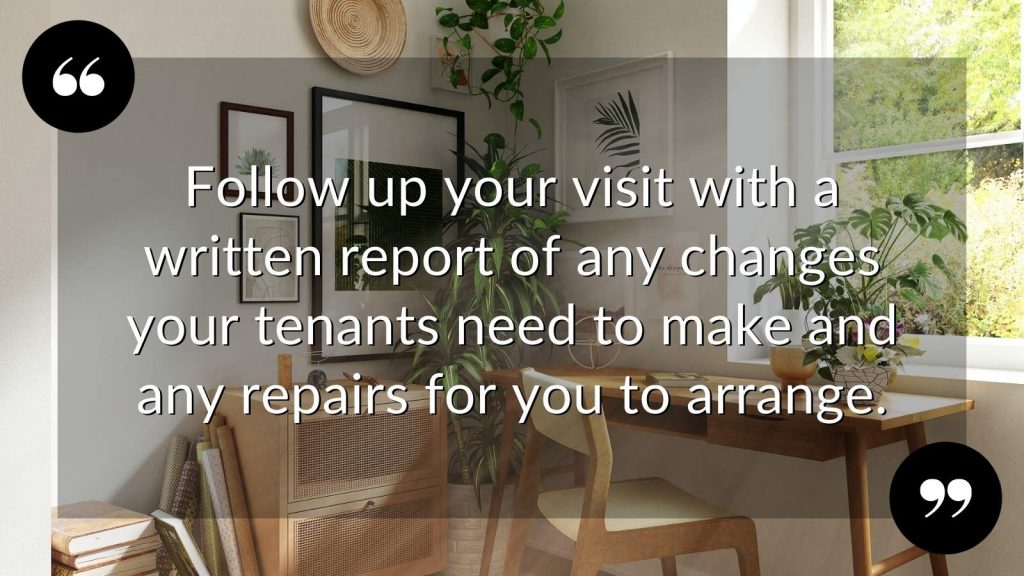
Acknowledge any concerns raised by your tenants and set out a timescale of any agreed repairs, maintenance or improvements. Then book in contractors asap to keep up the momentum.
You can also include any changes your tenants need to make to ensure your property stays well cared for.
The report can be checked off at your next mid-tenancy inspection, then again at the end of the tenancy in conjunction with the inventory to minimise any disputes.
Final words
Mid-tenancy inspections are the glue that holds tenancies together and the key to keeping your property in good shape. You nip problems in the bud, your relationship with your tenants stays fresh, and you can rest easy knowing that your property is in good hands.
If you’re a landlord with rental property in Hindhead, Haslemere and Liphook, we’d love to show you how carefully we look after the homes we manage. Call us on 0333 0880 264 or drop us a line at lettings@kelwaylaw.co.uk for a chat about protecting the value of your investments and keeping your tenancies in excellent health.



No Comments